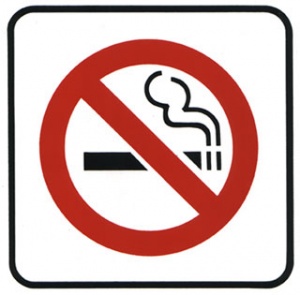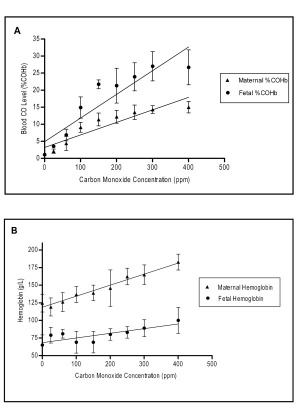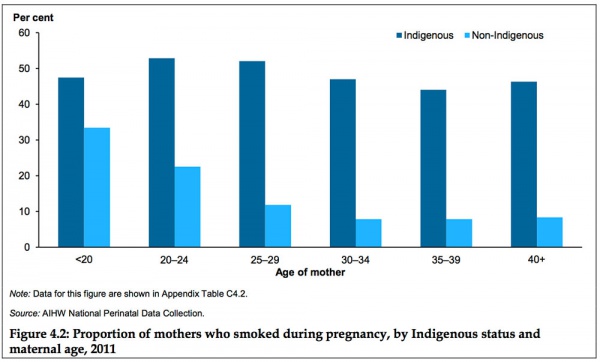Abnormal Development - Smoking
| Embryology - 24 Apr 2024 |
|---|
| Google Translate - select your language from the list shown below (this will open a new external page) |
|
العربية | català | 中文 | 中國傳統的 | français | Deutsche | עִברִית | हिंदी | bahasa Indonesia | italiano | 日本語 | 한국어 | မြန်မာ | Pilipino | Polskie | português | ਪੰਜਾਬੀ ਦੇ | Română | русский | Español | Swahili | Svensk | ไทย | Türkçe | اردو | ייִדיש | Tiếng Việt These external translations are automated and may not be accurate. (More? About Translations) |
| Educational Use Only - Embryology is an educational resource for learning concepts in embryological development, no clinical information is provided and content should not be used for any other purpose. |
Introduction
There is an association between physical defects among newborns and maternal smoking tobacco during pregnancy.
Spontaneous abortion, ectopic implantation, pre-term births, low-weight full-term babies, and fetal and infant deaths all occur more frequently among mothers who smoke during pregnancy than among those who do not. These developmental abnormalities are therefore environmental (maternal) in origin and not congenital (though there are probably genetics involved with a tendency to smoke).
The possible relationship to preterm birth generates one major clinical problem, as preterm birth results in 47% of all neonatal deaths (UK data).
Also of great concern is that smoking is a suggested causative factor for low infant birth weight (LBW) (2.500kg and below). LBW is in turn related to future (postnatal) health by the fetal origins hypothesis.
Some Recent Findings
Early Hum Dev. 2013 Jul;89(7):497-501. doi: 10.1016/j.earlhumdev.2013.03.007. Epub 2013 Apr 8.
|
| More recent papers |
|---|
|
This table allows an automated computer search of the external PubMed database using the listed "Search term" text link.
More? References | Discussion Page | Journal Searches | 2019 References | 2020 References Search term: Abnormal Development Smoking <pubmed limit=5>Abnormal Development Smoking</pubmed> Search term: Pregnancy Smoking <pubmed limit=5>Pregnancy Smoking</pubmed> |
Nicotine
Nicotine is a natural ingredient in tobacco leaves, where as an alkaloid it provides some protection for the plant being eaten by insects by acting as a botanical insecticide.
Tobacco also contains other minor alkaloids nornicotine, anatabine and anabasine.
There is a chemical datasheet for nicotine, the pure chemical, note that commercial tobacco products include many additional chemicals.
Neonates have a decreased ability to metabolise nicotine, with a 3-4 times longer half-life in newborns exposed to tobacco smoke compared with adults.
Cytochrome P450, Subfamily IIA, Polypeptide 6 (CYP2A6) is the main enzyme in the liver responsible for metabolism (oxidation) of nicotine. (More? OMIM Entry CYP2A6) and there are known mutations that occur in this gene which would also impact on nicotine metabolism.
See also the recent review paper Metabolism and disposition kinetics of nicotine. Hukkanen J, Jacob P 3rd, Benowitz NL. Pharmacol Rev. 2005 Mar;57(1):79-115. | Dempsey D, Jacob P 3rd, Benowitz NL. Nicotine metabolism and elimination kinetics in newborns. Clin Pharmacol Ther. 2000 May;67(5):458-65. | OMIM Entry CYP2A6
Carbon Monoxide
Smoking tobacco is also a source of carbon monoxide (CO), a colourless and odorless gas formed mainly as a by-product of incomplete combustion of hydrocarbons and can cause cytotoxicity by tissue hypoxia.
A recent study has identified in a newborn mouse model, effects on neurodevelopment of even sub-clinical levels of carbon monoxide.[7]
Carbon monoxide:
- enters circulation though the respiratory system
- binding to haemoglobin to form carboxy-haemoglobin (COHb)
- haemoglobin affinity is 240 times greater than for oxygen
- fetal haemoglobin binds with even greater affinity
- tissue hypoxia occurs when COHb levels are greater than 70%
Australian National Drug Strategy Household Survey 1995
Below are excerpted statistics from the 1995 household survey.
Smoking is higher among young women than young men, although males tend to smoke more heavily. Among 14-19 year olds: 13% are current regular smokers, 5% are occasional smokers, while 49% have never smoked.
For more information please email CEIDA Information Centre
Passive Smoking
Exposure of non-smokers to environmental tobacco smoke, "passive smoking", has been associated with a substantial increased disease risk (coronary heart disease, cancer) a recent study now adds diabetes to the possible deletirious effects. Houston TK, Kiefe CI, Person SD, Pletcher MJ, Liu K, Iribarren C. Active and passive smoking and development of glucose intolerance among young adults in a prospective cohort: CARDIA study. BMJ. 2006 May 6;332(7549):1064-9. "These findings support a role of both active and passive smoking in the development of glucose intolerance in young adulthood."
Smoking and Pregnancy
Smoking doubles the risk of having a low-birthweight baby and significantly increases the rate of perinatal mortality and several other adverse pregnancy outcomes. The mean reduction in birthweight for babies of smoking mothers is 200 g. High quality interventions to help pregnant women quit smoking produce an absolute difference of 8.1% in validated late-pregnancy quit rates. If abstinence is not achievable, it is likely that a 50% reduction in smoking would be the minimum necessary to benefit the health of mother and baby. Healthcare providers perform poorly in antenatal interventions to stop women smoking. Midwives deliver interventions at a higher rate than doctors. The efficacy of nicotine replacement therapy has not been established in pregnancy. Currently, its use should only be considered in women smoking more than 10 cigarettes per day who have made a recent, unsuccessful attempt to quit and who are motivated to quit. Relapse prevention programs have shown little success in the postpartum period. Data from: Quitting smoking in pregnancy Raoul A Walsh, John B Lowe, Peter J Hopkins (MJA 2001; 175: 320-323)
Placental Function
A review[8] of three placental markers showed "maternal smoking impairs human placental development by changing the balance between cytotrophoblast (CTB) proliferation and differentiation"
Australia
Data in this graph from AIHW 2014 Report, Birthweight of babies born to Indigenous mothers.[9]
- Links: Birth Weight
References
- ↑ <pubmed>25706869</pubmed>| PLoS One.
- ↑ <pubmed>24620362</pubmed>
- ↑ <pubmed>23578734</pubmed>
- ↑ <pubmed>24363249</pubmed>
- ↑ <pubmed>21617916</pubmed>
- ↑ <pubmed>21453488</pubmed>
- ↑ Cheng Y, Thomas A, Mardini F, Bianchi SL, Tang JX, et al. (2012) Neurodevelopmental Consequences of Sub-Clinical Carbon Monoxide Exposure in Newborn Mice. PLoS ONE 7(2): e32029. PLoS One
- ↑ <pubmed>15837073</pubmed>
- ↑ AIHW 2014. Birthweight of babies born to Indigenous mothers. Cat. no. IHW 138. Canberra: AIHW. Viewed 5 August 2014 http://www.aihw.gov.au/publication-detail/?id=60129548202
Reviews
<pubmed>17900829</pubmed>
Articles
<pubmed>22168775</pubmed> <pubmed>14555188</pubmed>
Search Pubmed
Search Pubmed: smoking and pregnancy
External Links
External Links Notice - The dynamic nature of the internet may mean that some of these listed links may no longer function. If the link no longer works search the web with the link text or name. Links to any external commercial sites are provided for information purposes only and should never be considered an endorsement. UNSW Embryology is provided as an educational resource with no clinical information or commercial affiliation.
Glossary Links
- Glossary: A | B | C | D | E | F | G | H | I | J | K | L | M | N | O | P | Q | R | S | T | U | V | W | X | Y | Z | Numbers | Symbols | Term Link
Cite this page: Hill, M.A. (2024, April 24) Embryology Abnormal Development - Smoking. Retrieved from https://embryology.med.unsw.edu.au/embryology/index.php/Abnormal_Development_-_Smoking
- © Dr Mark Hill 2024, UNSW Embryology ISBN: 978 0 7334 2609 4 - UNSW CRICOS Provider Code No. 00098G



